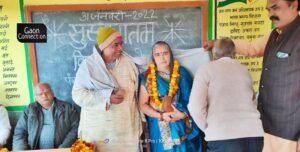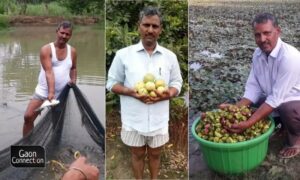Coimbatore, Tamil Nadu
It is the Tamil New Year, and the greetings on the occasion have been heartfelt and more fervent than ever before. It has been a difficult year with the COVID-19 pandemic still raging, and the sense of dejection and helplessness is difficult to keep at bay. That is the bitter truth.
But there is another bitterness associated with the Tamil New Year, which is strangely welcome and reassuring — Neem, which goes by the botanical name Azadirachta indica.
The bitter neem is an integral part of New Year feasts in many parts of India. In Tamil Nadu, it is one of the hero ingredients that go into the making of the vepumpoo pachchadi, a mandatory preparation for the New Year, made with the tiny white neem flowers among other things.
Every new year, elders in the family remind us that the pachchadi is a metaphor for life, and never has it made so much sense as it has this year. It is made with jaggery, raw mangoes and neem flowers among other things to remind us that life is like that, with a heap of sweetness, a dash of tartness, and often garnished with a sprinkling of bitterness.
And it is the balance of these flavours that make both life and the pachchadi so delicious.
“I made the Ugadi pachchadi and wished for strength to accept whatever life has to offer gracefully,” whatsapped one friend from Andhra while a Bengali buddy remembered how her Dad loved to have aloo seddho with neem paata bhaaja (boiled potatoes with fried neem leaves). Neem begun, a dish made with brinjal and neem, is fondly recalled and so on…
As for me, apart from the pachchadi, I just have one more recipe to share with my friends. Something I will remember till my last day. In fact I thought that was my last day when I was in migraine hell.
My husband’s aunt in Mumbai, Sridevi mami, fried neem flowers in ghee till it was almost black, put it on hot rice with more ghee, sprinkled some salt on it, and insisted I eat it. I immediately felt better. Ever since, anyone who talks to me about migraine, I tell them this is the magic remedy for it! And I always keep a store of neem flowers at home.
The New Year is all about rebirth, rejuvenation, cleansing and starting afresh and reaffirming life’s values, and no matter which part of the country we come from, the food we make on the occasion reflects these deep truths, I believe.
The year of the pandemic has given me pause to step aside from the humdrum and get more reflective. I find meaning in so many things I had dismissed earlier as just whimsy or old wives’ tale. Not so much now.
So I will make the pachchadi this year with an extra dose of love. And make raw mango rice, and some neem flower rasam too. It is the bitterness of the neem that speaks out to me the loudest.
Bitter is good. It keeps us grounded, teaches us to embrace it as part of life. Bitterness is healing and it enhances the sweetness, sourness and the piquancy of life.
Everything in the pachchadi is seasonal, grown locally and good for the planet. So, what better way to welcome the new year and pray it is a healing one.
Puthandu vazhuthugal!
Pachchadi recipe
Ingredients:
Raw mango: two, diced finely (peel them, if you must)
Jaggery: Half a cup or to taste
Water: 2/3cups
Neem flowers: two tablespoons
Red chilly: two or three broken
Mustard: ½ tsp
Curry leaves: one sprig
Salt to taste
Turmeric powder: ½ tsp
Ghee: two tablespoons
Procedure:
- Heat a tablespoon of ghee in a pan and fry the neem flowers till they are crisp and almost turned black. Keep aside.
- In the same pan add another tablespoon of ghee. Once it is hot, add mustard, allow it to splutter, add the curry leaves, red chilly, turmeric and the diced mangoes. Add water and allow to cook.
- Meanwhile in another pan, add the jaggery to a glass of water and bring to boil till the jaggery is completely dissolved.
- Once the mango is cooked, add the jaggery water to it (be careful to strain out any grit there may be in it), add salt and boil till it thickens. Remove from heat. If you dip your finger into it (be careful it is hot!) it should be satisfyingly sticky.
- Finally, the fried neem flowers that you have kept aside, drizzle them over the pachchadi just before you serve it. The crisp, slightly charred and hint-of-bitter completes the experience.



















